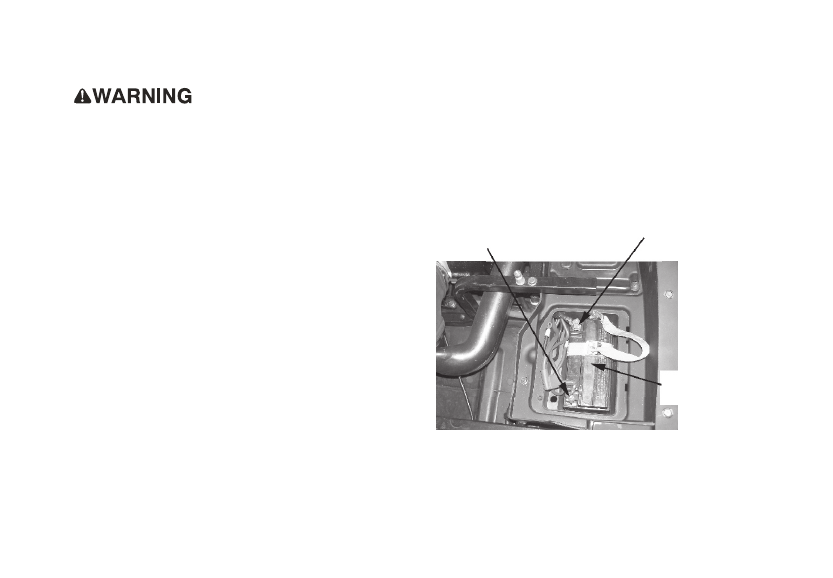CFMoto UTV Terracross CF625-3, CF500-6, CF625-6. Service Manual - part 8

Battery
Improperly connecting or disconnecting battery cables can result in an explosion and cause serious injury or
death. When removing the batter
always disconnect the negative (black) cable first. When reinstalling the
battery, always connect the negative (black) cable last.
Battery Removal
1. Remove the driver
'
s seat. See page 34.
2. On conventional batteries, remove the battery vent tube.
3. Disconnect the black (negative) battery cable
first
.
4. Disconnect the red (positive) battery cable
last.
5. Lift the battery out of the vehicle. Be careful
not to tip a conven-tional battery sideways,
which could spill electrolyte.
。
CAUTION
If electrolyte spills, immediately wash it off with a solution of one tablespoon baking soda and one cup water
to prevent damage to the vehicle.
Battery
-111-
Positive
(
red
)
Negative
(
black
)